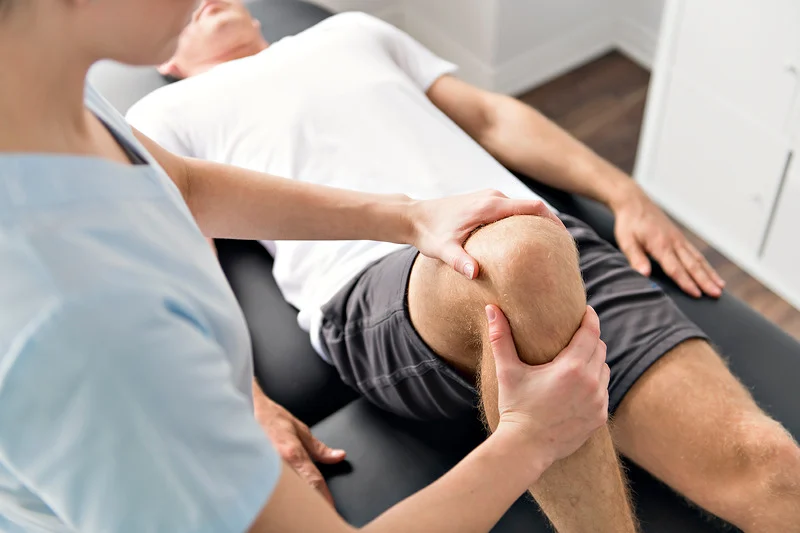Combination therapy with Hyaluronic Acid and Platelet-Rich Plasma (PRP) has emerged as a promising non-surgical option for treating joint conditions, particularly osteoarthritis. This combination offers enhanced benefits by leveraging the lubricating and cushioning effects of hyaluronic acid and PRP’s regenerative properties. Together, they provide more comprehensive pain relief and improved joint function than either treatment alone.
How Do PRP and Hyaluronic Acid Work Together?
When combined, PRP and hyaluronic acid offer a synergistic effect in treating joint disorders. Here’s how the combination works:
- Enhanced Lubrication and Shock Absorption: Hyaluronic acid provides immediate lubrication and cushioning to the joint, while PRP promotes long-term healing by stimulating tissue regeneration. Together, they improve joint function and reduce pain.
- Accelerated Healing: PRP contains growth factors that encourage the repair of damaged tissues, such as cartilage. Hyaluronic acid supports this process by maintaining a well-lubricated joint environment for healing.
- Prolonged Pain Relief: Studies suggest combining PRP with hyaluronic acid may lead to longer-lasting relief than using either treatment alone, providing significant pain relief for months and improving mobility.
When Should PRP and Hyaluronic Acid Be Considered Together?
Combination therapy is particularly beneficial for patients with moderate to severe osteoarthritis or those who have not responded adequately to hyaluronic acid injections or PRP alone. If non-surgical options for joint pain relief are being explored, PRP and hyaluronic acid can provide a more holistic approach to joint health.
How is Combination Therapy Administered?
Both treatments are administered through injections directly into the affected joint. PRP is derived from the patient’s blood, processed to concentrate platelets, and injected. Afterward, hyaluronic acid may be injected in the same session, or the treatments can be spaced out depending on the healthcare provider’s recommendation.
Hyaluronic Acid for Joint Treatment
Hyaluronic acid is a naturally occurring, gooey, and slippery substance found throughout the body, particularly in the joints, eyes, and skin. It is crucial in maintaining joint health and is often used to treat joint-related conditions, especially osteoarthritis.
How Does Hyaluronic Acid Help Joints?
Hyaluronic acid is essential for ensuring that your joints move smoothly. Here are some ways it supports joint health:
- Lubrication: Hyaluronic acid increases the viscosity of synovial fluid, reducing friction between bones and enabling smoother joint movement.
- Shock Absorption: It cushions the joints, especially weight-bearing ones like the knees, helping them absorb the impact of daily activities.
- Pain Relief: Hyaluronic acid injections, commonly used to reduce pain in osteoarthritis, help restore natural lubrication in the joint.
How is Hyaluronic Acid Used for Joint Treatment?
In a viscosupplementation procedure, hyaluronic acid is administered through injections directly into the affected joint. This treatment restores lubrication and cushioning in the joint, providing several months of pain relief.
Platelet-rich plasma (PRP) Injections for Joint Treatment
PRP injections use a concentration of platelets derived from your own blood, which contains growth factors that stimulate tissue healing and regeneration. PRP is used in joint treatments to promote the repair of damaged tissues, especially cartilage, tendons, and ligaments.
- Tissue Repair: PRP’s growth factors accelerate tissue regeneration, making it ideal for long-term joint health improvement.
- Reduced Inflammation: PRP also has anti-inflammatory effects, which can reduce swelling and pain in affected joints.
Is PRP Safe for Joint Treatment?
Yes, PRP is considered safe because it uses the patient’s blood to minimize the risk of allergic reactions. However, like any medical procedure, a trained professional should only administer PRP injections to ensure safety and effectiveness.
Additional Common Questions
How Long Does Combination Therapy Last?
The effects of combination therapy with PRP and hyaluronic acid can last longer than either treatment alone. Many patients experience prolonged pain relief and improved mobility for six months to over a year, depending on the severity of their condition and individual response to the treatment.
Are There Alternatives to Hyaluronic Acid and PRP for Joint Treatment?
Other treatments for joint pain include oral medications, corticosteroid injections, physical therapy, and surgery, for patients seeking non-surgical interventions, PRP and hyaluronic acid offer a more comprehensive and minimally invasive option.
A Note on Joint Health
Combining PRP and hyaluronic acid provides a promising, non-surgical solution to improve joint function, relieve pain, and promote tissue healing. Before starting any new treatment, including combination therapy, it’s essential to consult with your healthcare provider to determine if it’s the right approach for your specific condition.
Sources
- Cleveland Clinic. “Hyaluronic Acid Injections for Osteoarthritis.” Accessed October 2024. Cleveland Clinic.
- Mayo Clinic. “Platelet-Rich Plasma (PRP) Injections.” Accessed October 2024. Mayo Clinic.
- National Center for Biotechnology Information (NCBI). “Effectiveness of Platelet-Rich Plasma (PRP) and Hyaluronic Acid in Osteoarthritis: A Systematic Review and Meta-analysis.” Accessed October 2024. NCBI.
- Arthritis Foundation. “PRP vs. Hyaluronic Acid for Knee Osteoarthritis.” Accessed October 2024. Arthritis Foundation.
